ROOM: The Space Journal is one of the prominent magazines on space exploration, technology and industry. At ROOM, we share a common dream – advancement of peaceful space exploration for the benefit of humankind, all while bringing you comprehensive articles on an assortment,a range of interesting topics. Our authors include experts and industry leaders from all over the world, which lets us bring you the newest and comprehensive information about kepler exoplanets habitable zone.
 May 2018
PLATO the habitable zone explorer
May 2018
PLATO the habitable zone explorer
.... It will find thousands of planets, giving us a planetary census that builds on our knowledge from NASA’s Kepler, K2 and TESS space missions, and extending it in new directions that were previously inaccessible. Visualisation of PLATO .... PLATO design concept. Due to launch in 2026, PLATO will revolutionise exoplanet science. The mission will find Earth-like planets in the habitable zone of Sun-like stars. But who knows what else we might uncover....
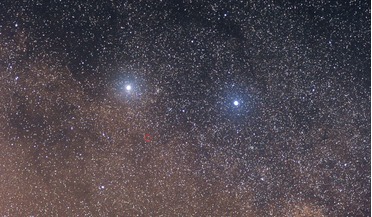 15 February 2021
Possible planet found in habitable zone around Alpha Centauri
15 February 2021
Possible planet found in habitable zone around Alpha Centauri
...the same size and temperature as our Sun, meaning their habitable zone, the range where liquid water is possible on the surface of any orbiting exoplanet, are about the same size as ours. The team ...1, or C1, or something else all together, at the very least, these results demonstrate that imaging rocky habitable-zone exoplanets with current and upcoming telescopes should be possible, say the team. “We look forward to the new capabilities...
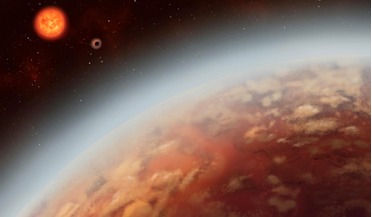 11 September 2019
First detection of atmospheric water vapour on 'super-Earth' in habitable zone
11 September 2019
First detection of atmospheric water vapour on 'super-Earth' in habitable zone
...has had a hand in helping astronomers with the first detection of water vapour in an exoplanet lying within the habitable zone of its star. The planet is known as K2-18 b, a rocky world eight-times as...and sits in a comfortable orbit 0.1429 AU away in the star's habitable zone. Initial studies of K2-18 b, which was first discovered in 2015, placed it in the ‘super-Earth’ category of exoplanets. At the same time, K2-18 b was also discovered to have ...
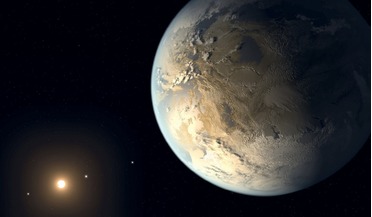 August 2018
Exoplanet census promises radical discoveries
August 2018
Exoplanet census promises radical discoveries
...planet or star in systems with more than one host star. The combination of the WFIRST exoplanet microlensing survey and Kepler’s transit survey will provide a complete statistical census of planets at all separations. This is ...starshade. To properly control diffraction and achieve a small enough angle to see Earth-like planets in the habitable zone around nearby stars, the starshade must be tens of metres in diameter and flown tens of thousands of...
 19 November 2018
Kepler officially retires after receiving final "goodnight" commands
19 November 2018
Kepler officially retires after receiving final "goodnight" commands
... are likely to be surrounded by small, possibly rocky, planets similar in size to Earth, orbiting within the habitable zone of their parent stars. This ‘Goldilocks zone’ as it has become known, is within a region where liquid water - a vital ingredient to life as we know... come closer than a million miles to our planet. The baton will now be handed onto the Transiting Exoplanet Survey Satellite (TESS) to pick up where Kepler left off.
 April 2019
Scanning the skies for exoplanets
April 2019
Scanning the skies for exoplanets
... orbit their host stars in 13 days or less; these are considered short orbital period exoplanets. Conversely, Kepler was adept at finding exoplanets with orbital periods from 10 days up to a few hundred days, a feature that proved...TESS will find the holy grail of exoplanet discoveries before this period ends. “Finding more Earth-sized planets will be very exciting, but finding an Earth-sized planet in the habitable zone of a star is pretty much at...
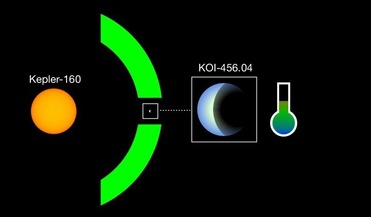 05 June 2020
Exciting exoplanet find around sun-like star
05 June 2020
Exciting exoplanet find around sun-like star
... noise in the critical cases,” Heller adds. Not much is known about the other new companion planet – Kepler-160d – and it cannot currently be ruled out completely whether KOI-456.04 is in fact a systematic measurement error or a ... building the PLATO Data Center. Distant worlds: typical exoplanets orbiting around a Sun-like star are about the size of Neptune and are in orbit in the habitable zone (third picture from above). Almost all of the Earth...
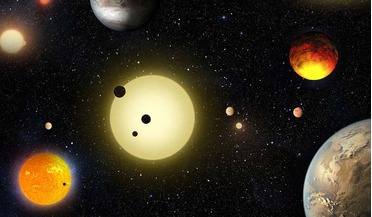 11 May 2016
Kepler scientists announce a major increase in confirmed exoplanet numbers
11 May 2016
Kepler scientists announce a major increase in confirmed exoplanet numbers
...consuming. To overcome this, scientists have developed a new method to quantify the probability that any given exoplanet signal is in fact caused by a planet, without requiring any follow-up observations. This involves simulating ... no easy task to spot the genuine article. Since Kepler launched in 2009, 21 planets less than twice the size of Earth have been discovered in the habitable zones of their stars. The orange spheres represent the nine ...
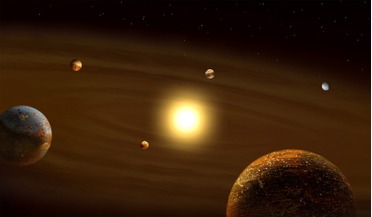 27 July 2019
Hundreds of new planet candidates detected by Kepler
27 July 2019
Hundreds of new planet candidates detected by Kepler
...Kepler’s K2 campaigns between 2014 - 2016, researchers have identified a whopping 374 previously undiscovered planets; 25 of them whizz round their host star in less than a day, one is potentially rocky and in the habitable zone...– K2 – and 15 months after being reassigned to its new stellar target, Kepler had racked up its 1,000th confirmed exoplanet discovery. Kepler’s K2 mission comprised of 19 ‘campaigns,’ lasting around 80 days each. These new...